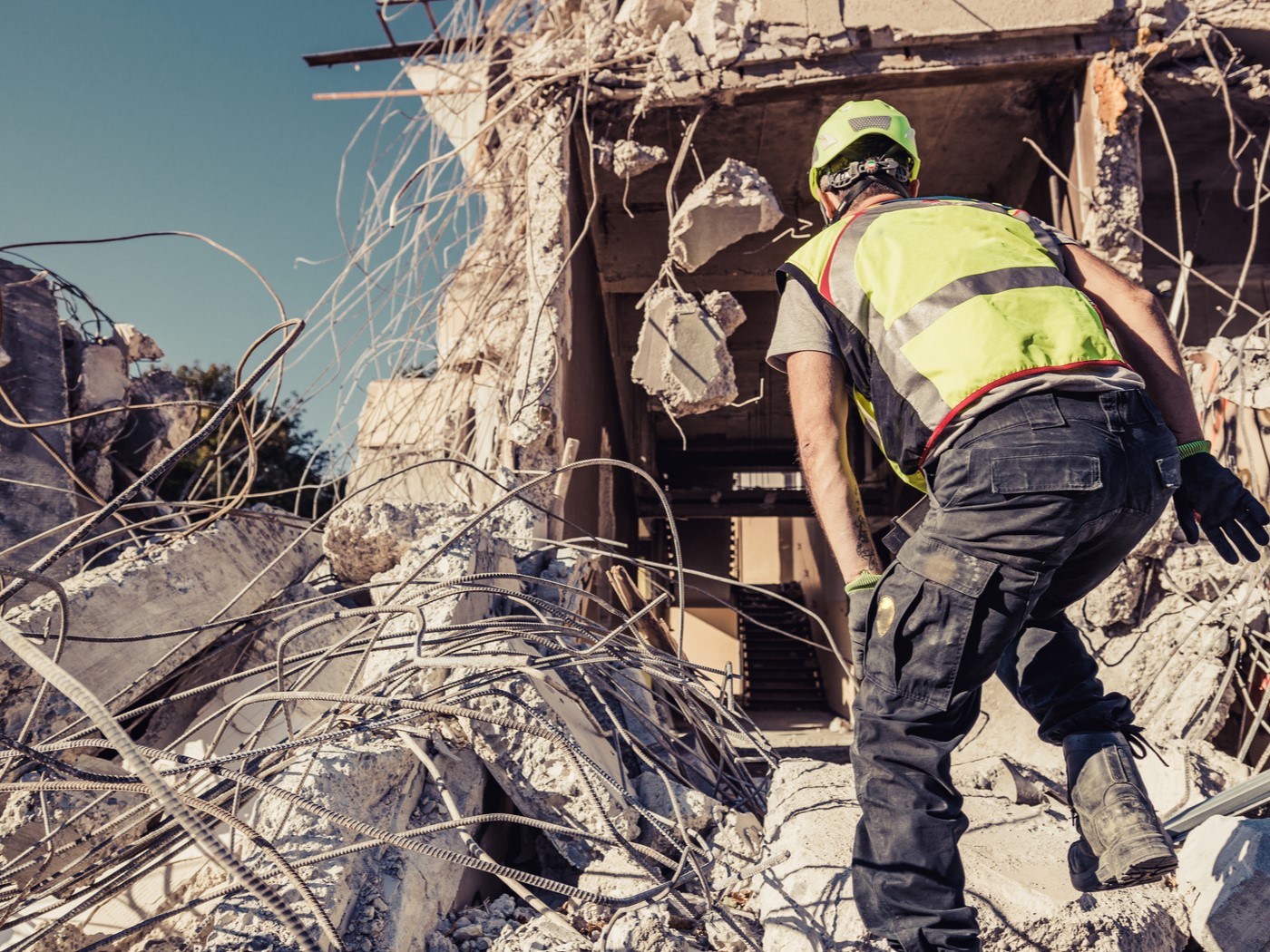Repetitive Stress Injuries Can Happen Anywhere. How Can Workers’ Comp Risk Managers Defuse Work-From-Home Risks?

Among the many unprecedented challenges faced by companies during the COVID-19 lockdowns is keeping employees who have transitioned to working from home safe from repetitive stress or other ergonomic-related injuries.
“At home, there is a vast variability in terms of employees having any office furniture or equipment, and many are working where they can, when they can in their home,” said Michelle Despres, vice president, physical therapy, national clinical leader, at One Call.
“This could be the dining room table, kitchen bar, couch or bed in many cases. Plus, many are working solely from laptop computers, and while they offer great flexibility and portability, there is not much benefit from an ergonomics perspective.”
Especially in urban areas where space is at a premium, such home office environments may be far from ideal.
The Detriment of the Home Office
The sudden nature of this shift toward working at home may have contributed to less-than-ideal home office environments.
“We moved to home offices in somewhat of a rush,” said Lisa Orr, ergonomics consultant at Sedgwick. “Some people didn’t really see this happening, and they might not have been prepared.

Michelle Despres, vice president, physical therapy, national clinical leader, One Call
“If we had known, we could have ensured that people got everything out of their office that they could use, like monitors and things like that,” said Orr. “We might’ve encouraged them to take all that.”
Of course, there could have been downsides to that, as well.
“If we knew we were going to be working from home for a year, and everybody started setting up their workplace all at once, can you imagine how we would not have found desks?” said Orr. “I mean, we already have a hard time finding desks appropriate for home-use that aren’t getting sold out quickly.”
Orr cited shortages of smaller desks and chairs in August 2020, as families prepared for the school year at home.
Some insurers have stepped in to help with procurement.
“We helped clients expand vendor and shipping networks to compensate for the surge in demand for home equipment and ensure that employees around the world had fast access to needed equipment,” said Stephen Craig, senior vice president, Chubb Global Risk Advisors.
What Does the End Look Like, Really?
The uncertain end-date of the lockdown has complicated matters.
“They did the best they could settling in, thinking, ‘Two, three weeks, I’ll be working from here maybe a month at most,’ ” said Orr. “And it lingered on. We’re still working at home, and we’re still using that same temporary situation that we set up a year ago.”
Of particular concern are employees already dealing with ergonomic issues.
“I worry about people who perhaps have had accommodations set up for them in the office, due to a disability or an injury, maybe a sit/stand station or something like that. And they don’t have that at home,” said Orr.
It is still unclear to what extent ergonomic injuries are developing among home office workers.
“We looked at data to see if more injuries that could be consistent with ergonomic issues and desk issues, working from home, had increased, and we’ve found that they had,” said Despres.
“It’s not guaranteed that these injuries were tied to an ergonomic injury, [but] we did see a marked increase between the same period in 2019 and the same period in 2020.”
Orr has had a different experience. “I really thought my phone would be ringing a lot more and it’s not,” said Orr. “I kind of feel like we’re still waiting. We’re still not seeing the effects yet.”
Underreporting of Ergonomic-Related Injury
Still, just because repetitive stress injuries might not be reported, doesn’t mean they aren’t there. Such injuries can take time to manifest, and the cause is not always obvious.

Lisa Orr, ergonomics consultant, Sedgwick
Employees may fear that reporting problems will be held against them. Not having HR just down the hall or that reminder on the wall of the breakroom could also be a factor, as could the uncertain end of the lockdown.
“They keep thinking, ‘I only need to hang in here for another month or two, so I don’t want to invest in an expensive chair or an expensive desk that I don’t have space for,’ ” said Orr.
People who enjoy working from home may be reluctant to jeopardize that option. “They may fear that, ‘Hey, if I say I’m hurting at home because my setup’s not good, is my company going to say oh, well, you need to come back into the office, where we’ve already supplied adjustable workstations or good ergonomic equipment?’ ” said Despres.
Employees may also be trying to “tough it out” until the end of the lockdown.
“I feel like the [injuries] that I’m still addressing today are ones that have been festering for a while,” said Orr. “Maybe we’re going to return people back to the office and see injuries there that have festered over the pandemic time.”
Managing the Risk
So, what can employers do to minimize such injuries and address the ones that occur?
“The employer has to be clear on what they want out of a program,” said Despres. Preventive ergonomic programs can range from simply checking in on employees and giving them information about good ergonomics, to self-assessments, to bringing in an ergonomist.
“There are a number of online diagnostic tools for assessing office ergonomic exposures based on user input. Good tools will have artificial intelligence built in to provide recommendations based on user input,” said Craig.
“A good ergonomics program will have a scalable, multi-tier ergonomic case management platform that includes an online smart assessment tool for tier I assessments.”

Stephen Craig, senior vice president, Chubb Global Risk Advisors
Certain responses to tier 1 questions would trigger a more in-depth tier 2 assessment, perhaps involving photos, video or a virtual discussion. And that could trigger tier 3, involving an actual ergonomist.
Addressing Concerns
Once problems have been identified, the employer must decide how to address them.
“The single best investment an employer can make to prevent ergonomic injuries is getting their employees good, ergonomically sound chairs,” said Craig. “Standing is good, but while sitting, it is important to have an ergonomic chair support you properly.”
But Orr pointed out that “it doesn’t all have to be expensive. Sometimes it’s just about teaching people how to work more appropriately or how to take breaks or how to take breaks without taking breaks. Perhaps they can stand while they’re on that conference call … stand up and walk around a bit.”
Often, the equipment needed to make a home office more ergonomic is not costly: a footrest or a new mouse, keyboard or monitor stand.
Even if more costly furniture is needed, like a chair or standing desk, employers have options, like allowing employees to bring items from the office into their homes.
Some employers offer a stipend. But Orr cautions, “I like it if you can give employees a bit of guidance on that, because sometimes they don’t know exactly what they need or they might make unwise purchases.”
For employers unable to purchase new furniture or equipment, Orr suggests extending to employees the discounts the company often received from office furniture or equipment vendors.
And constant vigilance is key. Even if companies were proactive early in the lockdown, changing tasks or workflows, new technologies or software, and unrelated but aggravating injuries can all contribute to new repetitive stress issues. It is even conceivable that remediations for one chronic issue six months ago may have caused another that is just now manifesting.
And while the end of the pandemic lockdowns may be in sight, many employers are looking at retaining work-from-home options, meaning home office ergonomic issues are likely here to stay. &










